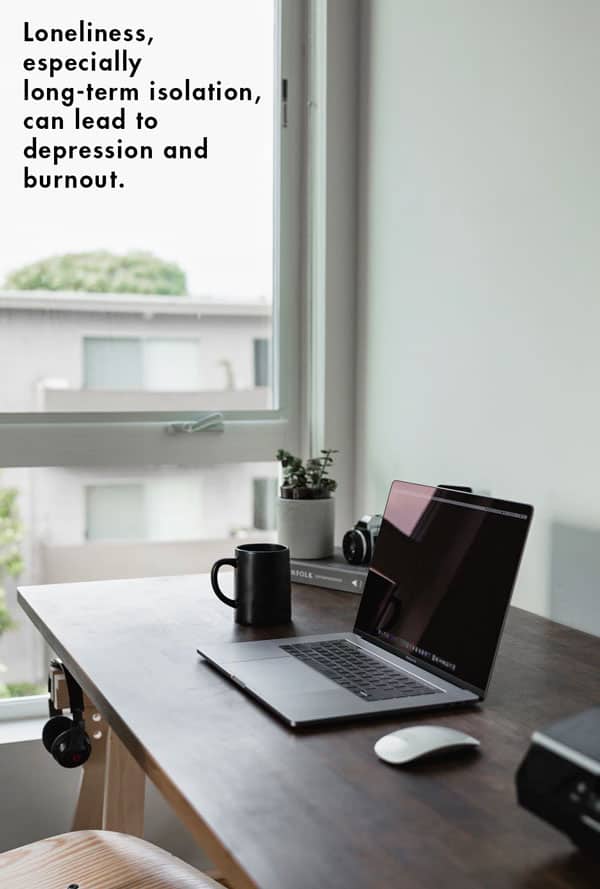In 2016, millennials became the largest generation in the U.S. labor pool. By 2025, this generation will make up 75% of the workforce worldwide, so it makes sense that the 21-to-36-year-old age group is transforming how companies operate around the world.
Reshaping the 9 to 5 has many benefits. Most companies think in terms of saving on rent and office supplies, but there’s also evidence that employees who have the opportunity to work remotely are more productive and report higher job satisfaction.
The 2015 AfterCollege Career Insight Survey revealed that 68% of college seniors and grad students want the option to work remotely at least part of the work week, possibly even full time. And Gallup’s State of the American Workplace report found that the number of remote workers increased from 39% to 43%. Well played, millennials.
Working outside of the office has its advantages: flexibility, reduced commuting cost and time, and never having to wonder who ate your lunch out of the communal fridge. But like frosted tips and open-plan offices, working remotely is a concept that seems like a good idea initially — but has just as many cons as pros, when considered properly.
It’s great that flexibility and work-life balance are becoming as much a standard benefit as a 401(k). But there are some risks and downsides to being based out of your home office rather than an actual office office. If you want to take care of business from the comfort of your home or favorite coffee shop, here’s what you need to know.

Living and working in the same space not only has practical downsides like more dishes to do, but if you're not careful, you can lose all separation between work and non-work time.
How to Cope with the Unforeseen Challenges of Working from Home
The most commonly reported downside to remote work is the isolation. While working in an office isn’t the same type of social occasion as going out to dinner with friends or a date, it’s still a chance to interact with others, hear someone else’s voice, and simply connect with your fellow humans. And if your team or department works closely, it can be difficult to collaborate from a distance.
Even if your boss is overbearing or your co-workers can be distracting, there’s a certain amount of comfort to be derived from being in their presence. Loneliness, especially long-term isolation, can lead to depression and burnout. Even die-hard introverts and self-styled misanthropes can fall prey to too much self-imposed exile.
Potentially related: diagnoses of major depression have increased 47% since 2013. There’s no big neon arrow pointing to working remotely as a direct cause; researchers call out economic insecurity, student loan debt, decreases in social interactions, and “feeling more alone and isolated than ever before” as potential culprits.
That does make it sound like living the WFH dream can be a bit of a nightmare for social animals such as humans.
Consider, for a moment, that the key ingredient to long life is often considered to be unity and solidarity: Dan Buettner, author of The Blue Zones, outlined five communities (the Greek island of Ikaria, Sardinia, the Nicoya peninsula in Costa Rica, Okinawa in Japan, and Loma Linda in California) where the local population not only outlives the average American/western European by a decade, but enjoys a greater quality of life. What do these five geographically diverse regions have in common? Diet? Climate? Lifestyle?
The social scene. Festivals, family connections, and a sense of community create purpose and contentment. Loneliness “can shave eight years off your life,” as Buettner notes. Humans by nature crave social relationships, and the absence of daily interactions creates a constant level of stress and unhappiness.
Before you pack up and move to Loma Linda, there are some simple strategies you can deploy to keep loneliness at bay:
Attend (or Organize) a Meetup
If most of your work interactions are virtual, it’s time to take things offline again. Meetup is a platform for finding and creating groups centered around shared interests. Anything goes — there are groups for everything from programming to pickleball — so you should be able to find a nearby group relevant to your career.
And if none of the career groups in your vicinity seem like a good fit, look for something related to socializing, or one of your hobbies or interests. If you’re lonely during the day, getting out and practicing the guitar, playing some board games, or workshopping your screenplay with a group could be just what you need.
Go Where the People Are
Something as simple as setting up your laptop at a coffee shop can check that “need for interaction” box. If you make this part of your routine, you’ll probably start to belong to a crowd of regulars — people who can be trusted to watch your stuff if you need to use the restroom.
However, a bustling neighborhood cafe may prove a bit too distracting, no matter how strong your noise-cancelling headphones. You could also try a bookstore or a public library, which are usually more geared toward quiet productivity.
But if you’re looking for the best of both worlds — quiet and camaraderie — maybe you should…
Join a Coworking Community
Shared workspaces are popping up all over the country, and they can be a boon for freelancers and remote workers, as well as companies in the start-up stage who don’t need a dedicated office space. The Harvard Business Review found that employees who work out of communal spaces report higher than average levels of professional thriving, compared to those who work in traditional office environments.
HBR surveyed several hundred workers, and interviewed multiple community managers and founders. Their findings broke down along three key takeaways:
People who use coworking spaces see their work as meaningful.
There are a number of factors that contribute to what makes work meaningful. One of the most relevant to combating isolation: a coworking space is more than just a location. Coworking as a movement is a social contract that reinforces values of community and collaboration; those who don’t work for the same company still share values and goals.
Coworking spaces allow individual workers more control.
Instead of the same ol’ same ol’ 9 to 5 (or 8 to 6), many freelancers and remote workers prefer to structure their day a little differently — starting (and staying) later, taking a mid-day break, etc. Using a coworking space allows members to retain the flexibility of working from home, and also creates a feeling of purpose and structure. It is possible to have too much of a good thing, after all. And while working from home isn’t quite like the Wild Wild West, if you don’t have a set routine it can be easy to lose track of time and, say, still be answering emails and working in bed at 10pm. Hypothetically.
Being surrounded by other productive people can help boost motivation and promote self-discipline, even if the person in the next pod over is working on something for another client, for another company, on another continent.
The key is getting to choose HOW MUCH structure (and how much freedom) you’re comfortable with. Everyone is going to have their own gauge for what’s too much, what’s too little, and what is juuuuust right.
Co-working spaces create community.
The last finding is obvious, but that doesn’t make it any less important. Most companies now promote their “culture” (that jargon-y word for the identities and values of any one individual workplace). But unless you’re getting in on the ground level of a business, or you’re a very high-level employee, the culture might be something that you’re supposed to adapt to, rather than having it work for you.
At many coworking spaces, the community managers strive to meet the needs of their members. If you want to socialize, you can sit at a communal table. If you want to work in peace, you can set up for the day (or an hour) in a quiet room or a private “phone booth”.
Even if you choose not to talk to anyone for most of the day, there’s something comforting about having other people in the building with you, vs. being alone in your apartment. Or as Harvard Business Review puts it:
…while our research found that some people interact with fellow coworkers much less than others, they still felt a strong sense of identity with the community. We believe this comes from coworkers knowing there is the potential for interactions when they desire or need them.
Finding Success as a Remote Worker
If you’re a freelancer feeling some pangs of loneliness, you have the most flexibility to do something about it — limited mostly by your budget and what’s available in your area.
While co-working spaces charge rent, most operate on a sliding scale, and some offer day passes. Public libraries and bookshops are free, and most Meetup groups charge a nominal fee.
If you have a full time job and you’re thinking of pitching the possibility of remote work to your employer, put in some research. Show how working outside the office can boost your productivity and the quality of your work. Suggest a few in-office days (a week, a month) to check in with your team in person. Your manager may even be willing to look into subsidizing your membership at a coworking space, or seeing if coworking can work for your team.

















